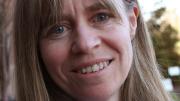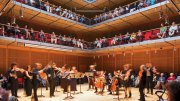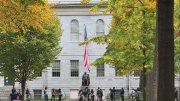Jane Pickering has been appointed executive director of the Harvard Museums of Science and Culture (HMSC), comprising the consortium of Faculty of Arts and Sciences (FAS) museums focused on natural-history and social-science collections. Pickering is deputy director and director of public programs at Yale Peabody Museum of Natural History.
FAS dean Michael D. Smith, who announced the consortium last spring, said in the announcement of Pickering’s appointment that “Harvard’s collections are some of our most unique and valuable resources, benefiting in some instances from centuries of faculty-led collection development and scholarship. The overriding goal of the new Harvard Museums of Science and Culture is to enable the easy utilization of these tremendous resources in our teaching and scholarship, and to share them with the public.” Smith announced the consortium last spring.
The six HMSC affiliates, overseen by faculty experts, are the Museum of Comparative Zoology (MCZ), the Harvard University Herbaria, and the Mineralogical and Geological Museum (which already collaborate as the Harvard Museum of Natural History [HMNH]); plus the Semitic Museum, the Peabody Museum of Archaeology and Ethnology, and the Collection of Historical Scientific Instruments. (From the Harvard Magazine archives, see “Telltale Apparatus,” a feature on the reinstalled scientific-instrument collection; and read about the MCZ at 150; the use of its collections in teaching, in the words of the recently deceased paleontologist Farish Jenkins; and research based on its butterfly collections.)
According to the news release, the executive director is responsible for the HMSC. In collaboration with the faculty directors and staff of the six collaborating museums, she will focus on their “public-facing” functions: exhibitions, education, public programs, development, and administration and operations. The museums are themselves diverse in scale and collections—and not in contiguous locations—so making them equally evident and appealing to their potential publics poses obvious challenges.
Pickering, who holds an M.A. degree in natural sciences from the University of Cambridge and an M.S. degree in museum studies from the University of Leicester, began her career as assistant curator of zoological collections at the Oxford Museum of Natural History. She subsequently served as director of the MIT Museum, before moving to Yale. In the news release, she said:
Universities provide an environment that enables the type of risk-taking and experimentation that together with a deep commitment to interdisciplinary work can foster truly great and innovative museum programming. Building on the successes of the past, I look forward to working with faculty, students, and staff at Harvard and the wider community to help realize that potential.
(A prospective visitor, for instance, could readily imagine an exhibition on flora or fauna drawing on the HMNH’s vast collections; the apparatus used in early research, from the scientific-instruments collection; and depictions of human interaction with some of the species from the archaeology and ethnology holdings.)
Pickering will succeed interim executive director David Ellis, former president of Lafayette College and of the Museum of Science, Boston, who oversaw the HMSC while a national search for a permanent appointee was conducted. James J. McCarthy, Agassiz professor of biological oceanography in the Museum of Comparative Zoology, chaired the faculty board which developed the new consortium. In the news release, he said:
This new era of coordination of the exhibition and outreach programs of the FAS museums…offers exciting new opportunities for teaching and scholarship within Harvard and for the public who use these museums. Faculty within the departments associated with the museums, as well as other faculty all across the FAS, will appreciate the new ease of access to these resources for use in Harvard courses. Moreover, the public, from school students and teachers to interested adults, will benefit from new windows into the research of faculty who know and understand the value of the objects and specimens in these museums’ world-class collections.








